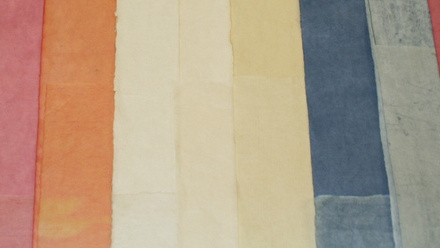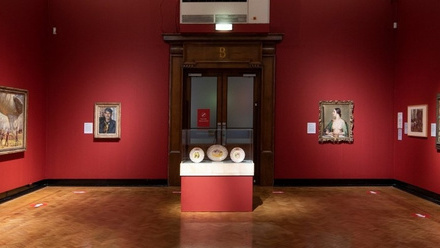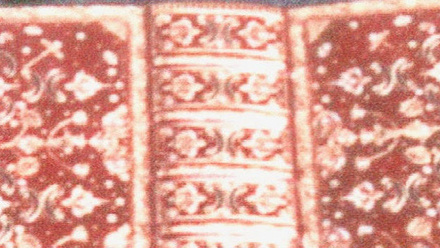William Cox (1866-1939) was a prominent Cornish painter. Having gained considerable recognition for his commissioned portraits, particularly of the Holman family who were influential in the Camborne mining industry, Cox left a lasting legacy on Cornish art.
Born in Camborne, Cox’s work is integral to preserving the town's artistic heritage. ‘St Ives Harbour’ offers a snapshot of Cornish culture and industry at the turn of the 20th century while the portrait of Captain Josiah Thomas highlights Camborne’s rich mining history . Thomas was a significant figure in Camborne's mining industry, serving as the Manager of Dolcoath mine from the 1860s to the 1890s and chairing the Camborne School of Mines' governing body.
Cox donated both paintings to the Camborne Library where they were intended for public display. To honour this intention and highlight their cultural significance to the people of Cambourne, comprehensive restoration work and a safe display to preserve their quality and importance for Camborne and its residents.
Conservation and Display Challenges
‘St Ives Harbour’
The frame exhibited minor chips with an extremely dirty front and water stains on the back. Rusty nails compromised its stability. The painting itself had numerous scratches, surface dirt, water drips, fly spots, and paint splashes. The canvas was on the verge of cracking due to heavy slacking, with emerging cupping and stretcher-bar marks. Poor oil retouching had left the painting desaturated.
‘Captain Josiah Thomas’
The frame had suffered water damage and broken plaster, with numerous chips on the edges and corners. The absence of a backboard left the canvas vulnerable. The painting showed signs of slack with ripples in the upper corners, minor splits, and tears. Light mold traces were found on the back of the canvas due to water ingress, requiring immediate attention. Excessively glossy varnish had picked up dirt, obscuring the painting’s details and diminishing its quality.
How was the grant used to address these challenges?â¯
The restoration, funded by the Tru Vue® Conservation and Exhibition Grant, was led by Cornwall-based conservator-restorer Sarah Cove ACR, with assistance from Professor Alan Cummings for ‘St. Ives Harbour’ and Michelle Rheeston for both paintings.
‘St Ives Harbour’
- Surface dirt was removed using ammonium hydroxide and tri-ammonium citrate, while stubborn blemishes were cleaned mechanically.
- Varnish layers were carefully removed to improve legibility, despite significant difficulty.
- Moisture treatment was applied to correct distortions, with losses and repairs addressed using Flugger Acrylic Putty and BEVA 371 adhesive gel.
- Linden RK20 was used to protect and saturate the paint, with abrasion recovery performed using PVA Mowilith 20 and dry pigments.
- Final glazing involved gloss RK20 and dry pigments, followed by a spray varnish of RK20 + 2-3% Cosmolloid 80H microcrystalline wax for a semi-gloss finish.
- A new frame from Sully’s Framers of Penryn, fitted with Tru Vue® Optium Acrylic glazing and black wooden spacers, along with a protective backing, completed the restoration.
‘Portrait of Captain Josiah Thomas’
- 15 hours of manual tweezer work were dedicated to removing surface dirt.
- The back of the canvas and stretcher were cleaned with a 5% hydrogen peroxide in water solution to eliminate mold spores.
- Repairs involved patches of nylon gossamer, polyester sailcloth, and Beva 371 film, heat-sealed into place.
- Gloss RK20 conservation varnish was used for retouching, with 3-5% Cosmolloid 80H microcrystalline wax applied to the surface.
- Losses and corner mitres were consolidated with PVA wood glue and Lascaux Medium for Consolidation, filled with Flugger Acrylic Putty, and retouched with acrylic paints.
- The frame was fitted with Tru Vue® Optium Acrylic glazing, sealed with aluminium tape.
Project Outcomes
The restoration has preserved these culturally significant paintings and ensured their longevity. Their display highlights Camborne’s rich mining history and broader Cornish identity, educating and inspiring the public.
The project has also stimulated the local economy, supporting Cornish businesses like Sarah Cove’s restoration team and Sully’s Framers. This collaborative effort underscores the importance of preserving local heritages and ensuring beautiful pieces of art continue to inspire future generations.
Applications for this year’s Tru Vue® Conservation and Exhibition Grant Scheme are open until Monday 30 September 5pm (UK time). Read more about the Scheme and apply here: The Tru Vue Conservation and Exhibition Grant.






